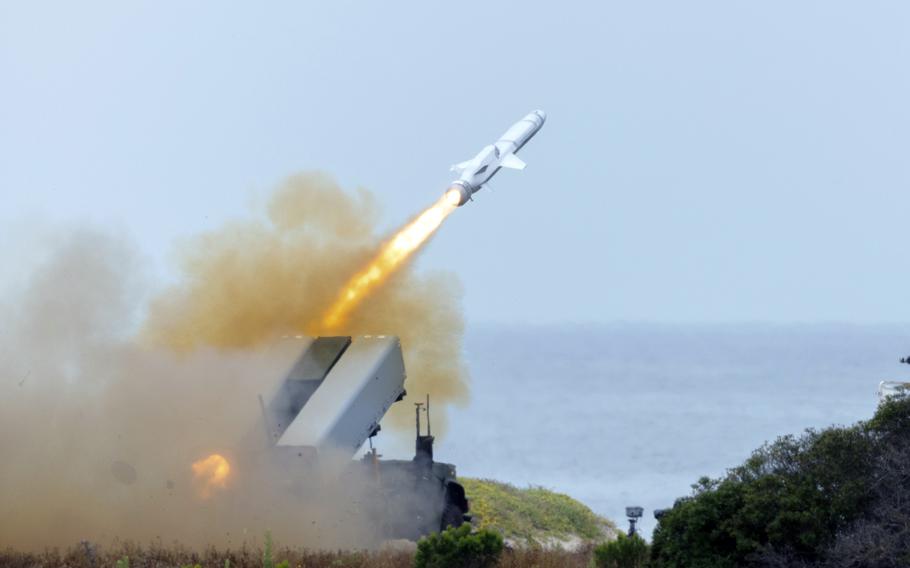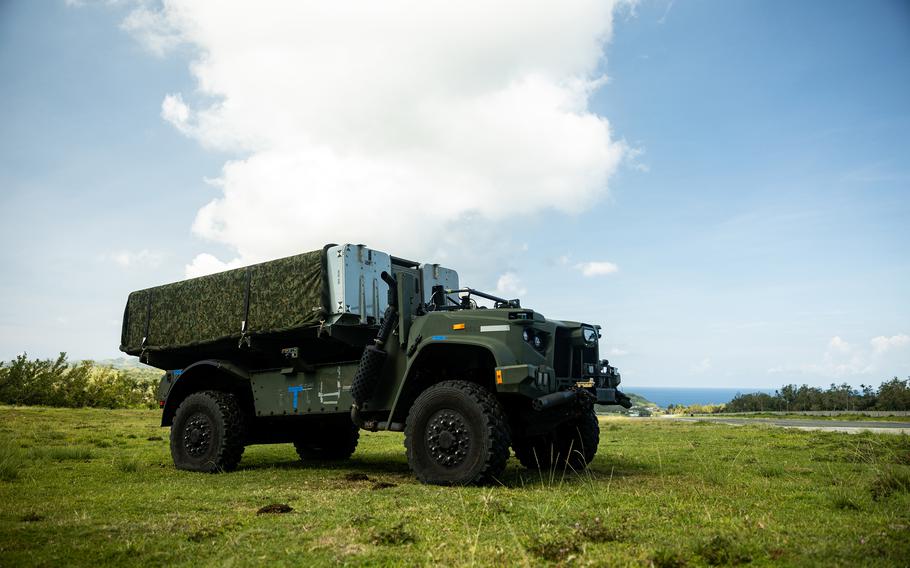
A Navy-Marine Expeditionary Ship Interdiction System, also known as NMESIS, is fired at Naval Air Station Point Mugu, Calif., June 28, 2023. (Earik Barton/U.S. Marine Corps)
U.S. Marines are stashing an anti-ship missile system in remote corners of the northern Philippines as part of an ongoing exercise meant to counter threats in the region’s contested waters, according to the commander of the Hawaii-based 3rd Marine Littoral Regiment.
Members of the regiment have been in the Philippines since the start of spring and are participating in Kamandag, a 12-day annual exercise with Filipino forces that wraps up Friday.
The training comes amid rising tension between Manila and Beijing over territorial disputes in the South China Sea.
The Navy-Marine Expeditionary Ship Interdiction System — NMESIS — made its Philippines debut in April and is operating in the Batanes, a group of islands east of the Luzon Strait between Taiwan and the Philippines, Col. John Lehane, the regiment’s commander, said by phone Wednesday.
Marines are using NMESIS for simulated missions to test the system’s ability to target ships at sea. They are not conducting live-fire training, he said.
Lehane declined to say how many Marines are involved or which islands they’re using but said each island in the group presents unique challenges. The Batanes cover just 84 square miles, but Marines can still conceal the systems effectively, he said.

Members of the Hawaii-based 3rd Marine Littoral Regiment stage the Navy-Marine Expeditionary Ship Interdiction System, or NMESIS, during annual Kamandag drills in the Philippines, May 25, 2025. (Malia Sparks/U.S. Marine Corps)
“You would be surprised how creative we are,” he said. “There’s no shortage of places we can hide things, even on small islands.”
The regiment acquired NMESIS in November. The system includes launchers, a 7-ton vehicle and two Joint Light Tactical Vehicles. Its deployment is part of the Marines’ Force Design strategy, which positions small units at maritime chokepoints to deny enemies access to contested waters.
While the islands offer cover for the launchers, spotting ships in the Luzon Strait is straightforward, Lehane said. The Marines are supported by U.S. Navy P-8 Poseidon aircraft, drones, satellites and their own sensors.
“It’s pretty remarkable the capability that we have,” he said. “There’s not much that I don’t know.”
Most vessels in the area are commercial cargo ships or fishing boats, Lehane said, noting the strait’s role as a trade route linking the Middle East to Northeast Asia.
Marines have also practiced flying NMESIS to the islands on KC-130J Super Hercules aircraft and loading and unloading the system from a stern landing vessel, Lehane said.
During training on the Philippines main island of Luzon, the NMESIS worked alongside the Marine Air Defense Integration System — MADIS — also in the Philippines for the first time, he said. MADIS is equipped with Stinger missiles, a 30 mm cannon and a 7.62 mm machine gun.